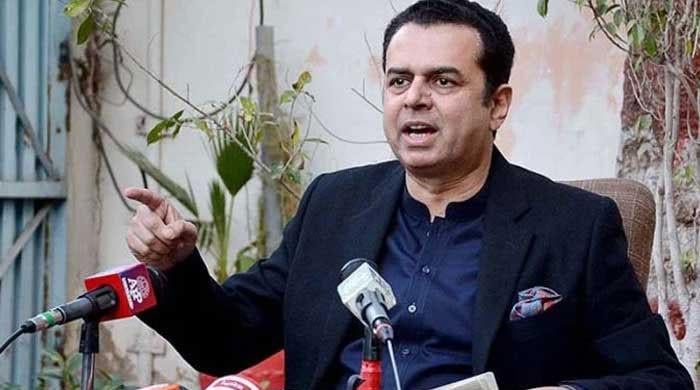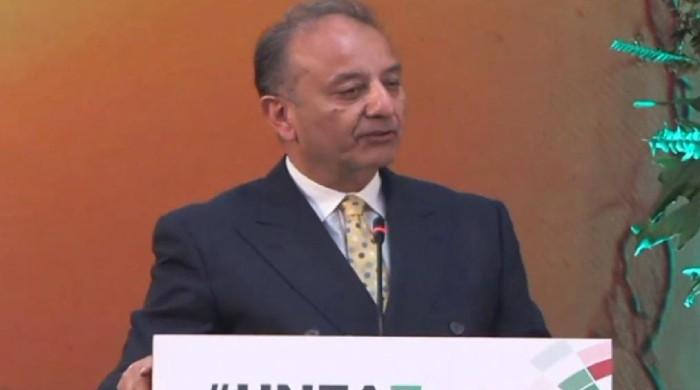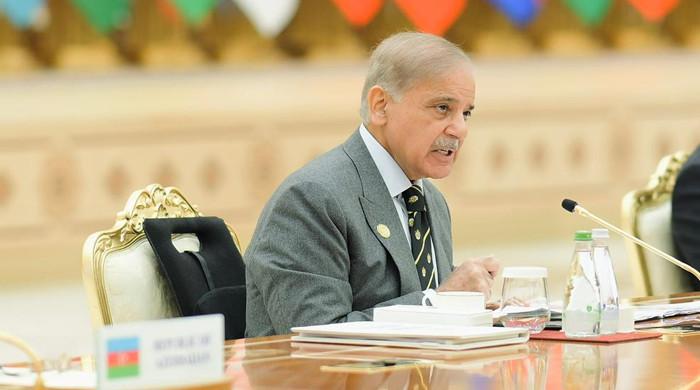All you need to know about PEMRA's Web TV, OTT proposed regulations
Read on to find out more about how a common man will be affected by the regulations
February 02, 2020

A lot of misinformation has spread recently after the Pakistan Electronic Media Regulatory Authority (PEMRA) recently called for regulating website television (WEB TV) and over-the-top (OTT) content services.
A furore has been fueled by rumours of a notice being served to YouTubers. But even though PEMRA has released a rebuttal and Prime Minister Imran Khan’s focal person on digital media, Dr Arsalan Khalid, has also dismissed the rumour, there is much that remains to be explained.
Here’s how a common person may get affected by the proposed regulations.
Should PEMRA have been clearer?
Based on the PEMRA’s draft, the authority seems to be as confused itself as are people. Their proposal is ambiguous in numerous aspects and it was not clear whether the intent was to regulate online content or taxing it.
What is Web TV service as per PEMRA?
In its draft, the PEMRA defines Web TV as an equivalent to a broadcast TV channel’s livestream. The Web TV may have a programme schedule comprising various live shows and recorded ones but they must be shown to online audience in a non-linear way via a website. However, it was not clear in the draft whether these livestreams have to be aired 24/7 to be considered Web TV. Would a web-only, once-a-week, live show also be considered in this definition?
How does PEMRA define OTT content services?
According to the PEMRA, all video-based, on-demand content is to be categorized under OTT content services. Therefore, an archive of videos on a website that can be accessed at any time and in any order would be considered an OTT service.
Does this include mobile and messenger-based apps?
Considering the draft, the simple answer is no.
The PEMRA has repeatedly used the words ‘website’ and ‘URLs’ throughout its proposal and has also shared a plan to block content with the Pakistan Telecommunication Authority’s (PTA) help in case of violation.
Generally, most OTT and Web TV services around the world rely heavily on mobile apps.
But does this mean one does not need to conform to the PEMRA’s requirements as long as they do not have a ‘website’ or ‘URL’ that could get blocked? Does the regulator plan to block the ‘app download’ URL? What if the content is being distributed through an alternative to app stores? What about the millions of people who already have such apps on their mobile phones? What if it’s a platform app? And what of messenger-based apps that have their own rapidly-evolving ecosystem and are a big source of fake news?
The answer to all these questions is most likely no.
How about third-party platforms like Facebook and YouTube?
It is interesting to see that the PEMRA’s draft does not shed much light on the usage of Web TV & OTT services on existing third-party platforms. It said aggregation services would require a license but platforms with user-generated content (UCG) won’t; but what about user-generated, aggregation-based website where users share embedded videos from all over the Internet? Would that, too, require a license?
The regulator also failed to clarify if it plans to impose such a requirement on individual contributors to that platform as well. Would it make a difference if they change their location from Pakistan to Panama? Would the license be obtained on a per-platform presence basis or would it be valid across all known platforms? What about new platforms in the market? What about those that only provide audience reach and not share revenue statistics with users? How would the PEMRA exercise any control over such platforms?
Interestingly, blocking URLs would not help as it does not cost a dime for users to upload content over and over again and obtain new URLs. Plus, on a large scale, it would turn the whole blocking URLs scenario into a classic case of wild goose chase for PEMRA employees. Does that mean an imposing license restrictions on international platforms as well? Would Pakistan see another ban on YouTube, Facebook or maybe even TikTok in the near future?
Now to the even trickier part!
The PEMRA not only wishes to charge a one-time license and an annual fee but also two percent of the gross revenue generated through these services. But what about the revenue stream from the services’ mobile apps? Would it ask international platforms to disclose the split between the revenue generated from URLs and apps?
A Rs5-10m fee from individual contributors?
The proposal does not make this clear but from a pure technical and commercial perspective, the PEMRA really cannot charge individual contributors such a fee. Not only is it counterproductive but counterintuitive as well.
No matter how naive the people who came up with the draft to regulate digital space may look like, they definitely know better than to bite the hands that may feed them later. Therefore, it is highly unlikely to be the intention here.
Regulating content on international platforms may be the agenda and that’s the reason the body mentions the Code of Conduct 2015 throughout the document but a word of caution for all individual contributors who run their own blogs: such blogs may be required to obtain a license.
How would this impact large publishers?
It is highly unlikely that this draft would affect large-scale publishers from a financial perspective since spending Rs5-10 million for a license that essentially creates strong barriers to entry for newcomers who could disrupt the market would be a welcome sight for them.
But here is the caveat for such large-scale publishers: Almost all of them already have Web TV and OTT content services on their websites, apps, and mainstream social media and content platforms. However, the PEMRA has proposed in its draft that no single entity can have the license to both services at the same time, making it — frankly — a foolish move.
It is the channels’ content and that content is what makes their digital presence all the more worthwhile for everyone. It’s something of a part and parcel of their service. This is how it’s growing everywhere in the world. Plus, the users want it.
Such a stipulation alone is enough to put an end to all the growth. And if PEMRA allowed large-scale publishers to have the license to both services at the same time but not the newcomers, it would not be a level playing field — something that the proposal promises to achieve through these regulations.
What we really need to understand here
It is important to note that these regulations are not yet proposed to any legal body for formalisation. This is more like a first draft that PEMRA has shared with the public and asked for their opinion on it.
It is a commendable approach on its own as one can’t recall many incidents when institutions like these have asked for public opinion so the backlash was really unnecessary.
Instead of criticising PEMRA, what we could have done was to sit together and propose another draft covering our point of view as a reply or if that’s asking too much then maybe just share our feedback in a more constructive way.
Then on PEMRA's end, we can expect that all of the comments they have received, along with the overall sentiments and feedback shared over traditional and social media, will be taken into account while drafting the next version as this is the only way to progress further on this regulation.
It is imperative for PEMRA to make necessary revisions to this draft before proposing it to an official legal body (say cabinet & parliament) to be approved as a regulation.
How PEMRA can generate revenue from regulating this space?
Well, PEMRA has shared multiple examples from regulatory authorities of other countries on how they are exercising a degree of control around these services but they have not explicitly told if any of these authorities are charging any fee.
Yet a few of them are operating without imposing any kind of charges. So what can PEMRA do?
Let’s start with the revenue. We can take an example from a recent email from Google to all of the publishers who earn revenue from US-based traffic.
"The AdSense account associated with your YouTube content owner(s) has been identified as earning revenue from viewers in the United States.
"As a result, payments for this revenue are subject to US withholding taxes and reporting. If any US withholding taxes apply, Google may begin withholding taxes on the payments made to you starting as early as 1 January, 2020.
"Google has a responsibility under Chapter 3 of the US Internal Revenue Code to withhold tax and report in certain instances to the Internal Revenue Service when a partner earns income from viewers in the United States.
"Only the portion of your content owner revenue earned from US viewers will be subject to US withholding taxes and reporting. These are revenues (e.g advertising views, transactions, subscriptions) that are generated from viewers in the United States.
"The applicable US withholding tax rate will be based on the tax documentation that you have provided to Google (e.g. Forms W-8 or W-9).
"You will see the finalised amount withheld in the AdSense payments report.
"We have noticed that you have yet to submit a tax form or have provided an invalid form.
"As a reminder, if we do not receive completed valid tax documentation (e.g. W-8, W-9) from the content creator, it may result in future payments made to the person subject to 30 per cent US Federal Withholding Tax."
So we need to understand the process of making money through these channels and tap into them.
Here in our case, most of the publishers are making their revenue from ads that appear on their websites or on their content pages in a platform or within their content.
But no matter where the ad appears, generally the largest bulk of this revenue comes from a single company ie, Google. Facebook also seems to follow Google’s lead on this.
There are some other players but they have a very small piece of the pie. Some of the large publishers also directly sell their ad inventory but it does reflect in their books. To tap into this revenue stream, PEMRA can take a 3 step approach.
Get these platforms registered in Pakistan as a business.
Make a slab of revenue percentage based on the scale of the publisher.
Ask these platforms to deduct this share at source from all of the revenue that was generated through traffic from Pakistan regardless of the medium as in the platform itself, platform’s mobile app, publisher’s site or publisher’s mobile app.
For revenue that is earned by directly selling this ad inventory to advertisers, there needs to be a reporting mechanism on both ends with the tax authority who will make sure there is no tax evasion or avoidance taking place in the whole process. This would also be the case with all of the subscription-based services.
This will ensure that PEMRA gets its fair share as well as create a level playing field for everyone who is making money from Web TV & OTT based content services.
How PEMRA can exercise control over content in digital space?
Now comes to the regulatory part of enforcing a uniform content policy (i.e., compliance with the Code of Conduct-2015) across all mediums. This can be and should be done without any license fee like all other countries are doing.
This can be enforced on the platform level itself by making it mandatory to agree with PEMRA's Code of Conduct 2015, so no other license is required by the individual content contributor. Same would be the case with mobile applications. For websites, there can be an online process where the website owner could submit their website and agree with all of the terms and conditions set forth in the code of conduct 2015. This would essentially give them a license to provide these services.
It is imperative to understand for the legislators that these platforms disrupted this market by removing friction and if the government truly cares about the digital disruption then it should try to propose policies that are productivity-oriented and not being developed with anomalies in mind by adding unnecessary hurdles for people who can and will bring about this“tabdeeli”.









